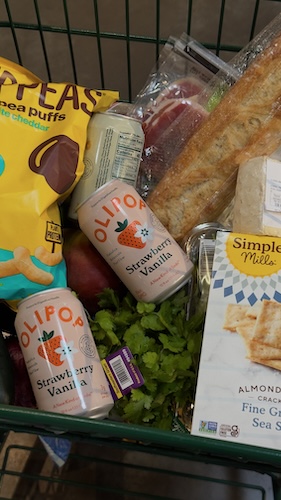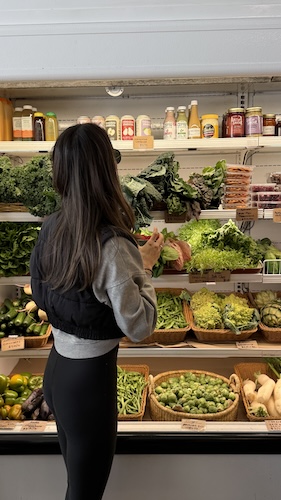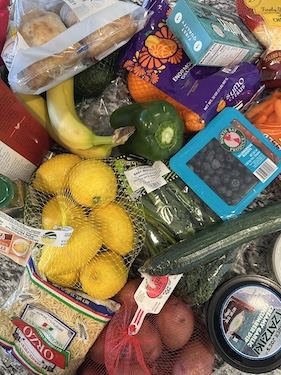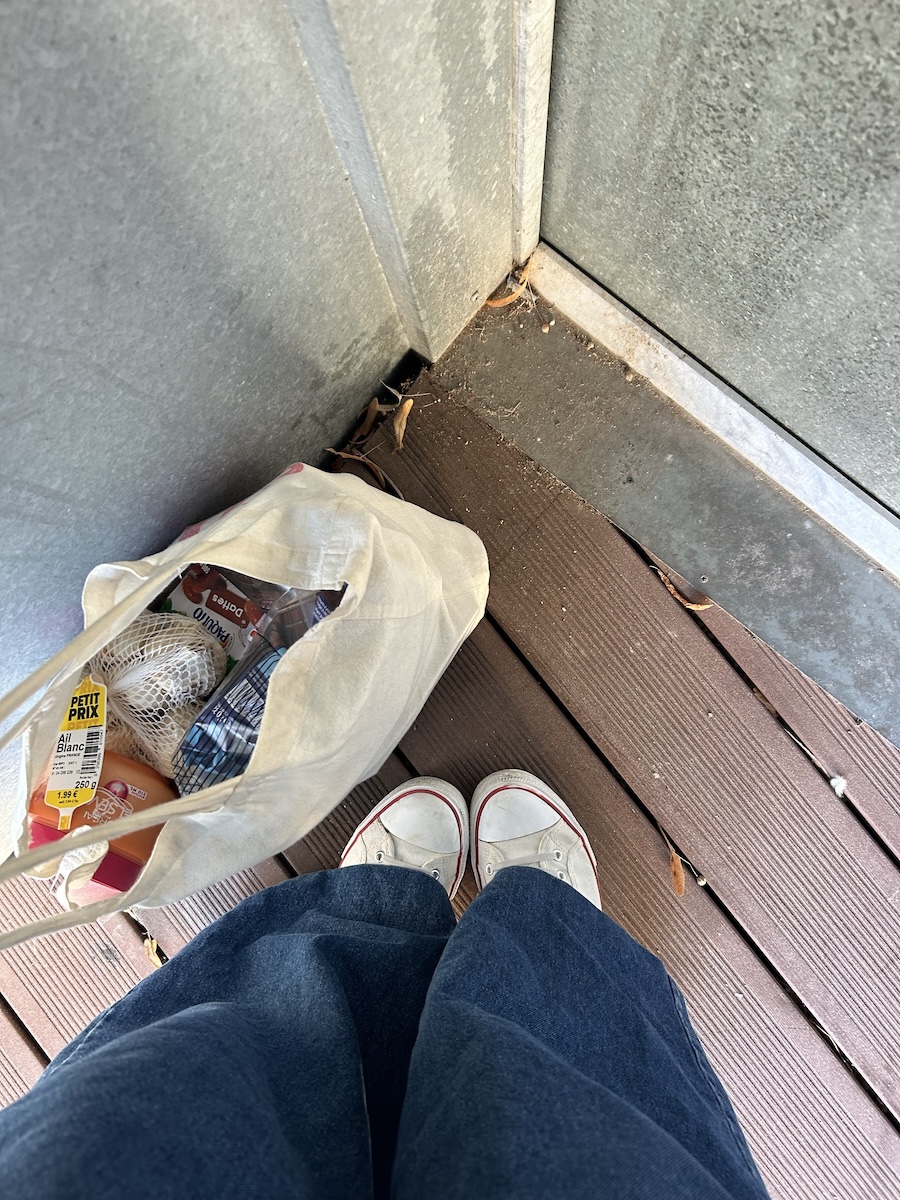Real talk: I nearly had a heart attack looking at my grocery receipts at the end of last month. $527 for what felt like basically nothing! With two hungry kids (one that’s basically a carnivore) and a husband who suddenly decided protein shakes were his personality, our grocery budget was spiraling out of control. After three weeks of implementing some serious changes, I cut a big chunk of money off of our bill without anyone noticing a difference in what we eat.

Looking to save money on groceries without sacrificing quality? Here’s what actually worked for our family to drastically reduce our food expenses.
1. Grocery Budget Meal Planning: Start With Your Pantry (Not Pinterest)
Let’s cut to the chase: those gorgeous meal plan ideas you’re saving on Pinterest? They’re budget killers. Unless you’re making one of those “only 7 ingredient” meals, you’re having to buy a lot of items that you normally wouldn’t. Instead of planning meals and then shopping, I started doing “pantry audits” first. I just open all my cabinets, take inventory of what’s already there, and build meals around those ingredients.
Last week, I discovered three cans of black beans hiding in the back of my pantry and turned them into taco night, bean and rice bowls, and black bean brownies (yes, they were actually good, and my 5 year old had no clue they contained beans). This alone saved me about $50 because I wasn’t buying random new ingredients for fancy recipes that would never get used again.
2. Use the “Meat as a Garnish” Method
Meat is typically the most expensive part of your grocery budget. Instead of making it the star of every dinner, I’ve started using it more as a “garnish” and building meals around cheaper proteins and vegetables.
For example, rather than using a pound of ground beef in tacos for our family of four, I now use 1/2 pound stretched with extra beans, tofu or vegetables. Nobody has complained because the flavors are still there, but our meat expenses dropped by 30% almost instantly.
3. The $5 Budget Meal Challenge Day
This was a game changer for us. Once a week, I challenge myself to make a family dinner that costs less than $5 total. It forces creativity with cheaper staples like pasta, eggs, or potatoes.
Our favorite $5 meal has become “breakfast for dinner” with a big batch of pancakes (or one giant german pancake) and whatever fruit is on sale. The kids think it’s a special treat, and it costs about $4.75 total for all four of us.

4. Save Money on Groceries: Shop From Your Phone (Seriously)
I resisted grocery pickup for years because I was convinced I could find better deals in person. While this is at times true, I still found that I was spending or buying more when I went inside the store. When I started ordering groceries from my phone:
- I stopped making impulse purchases (saving roughly $30 per trip)
- I could easily compare prices between stores without driving around
- I could see my total before checking out and remove unnecessary items
- I could easily search for store brand alternatives
A normal grocery pickup or delivery fee is $5 but our family chose to sign up for the yearly membership, where we end up saving money in the long run (and always get at least double the fuel points). Combine that with saving at least $30 per trip by not wandering the aisles throwing random stuff in my cart and it’s totally worth the yearly expense.
5. Find Your Grocery Budget “Price Point” for Staples
One of the simplest changes I made was creating a “price point list” for our 15 most purchased items. If chicken breasts are over $2.99/lb, I don’t buy them that week. If name brand cereal is over $3, we stick with store brand or oatmeal.
Once you know your price points, you can quickly scan deals and stock up only when things are actually a good price, not just when they’re labeled as “on sale.”
My current price points include:
- Chicken breasts: $2.99/lb or less
- Ground beef: $3.49/lb or less
- Frozen vegetables: $1.50/bag or less
- Cereal: $3 or less
- Yogurt: $0.50 per cup or less
6. The “Half Cart” Rule to Slash Your Grocery Budget
This super simple trick has saved me hundreds: I only allow myself to fill half my cart at the grocery store (or half my online order compared to normal). It forces me to prioritize the true essentials and skip the nice to haves.
The first week I tried this, I was certain we’d run out of food by Wednesday. Surprise: we didn’t. Turns out we were buying about twice as much food as we actually needed, and a good chunk was ending up either uneaten or tossed.
Also, I always make sure to scan back through my online cart one last time before hitting “purchase.” Usually, 1 or 2 unnecessary items are there that I am able to contemplate again, and ultimately delete from the list.

7. Do a “Freezer Cleanout” Weekly to Reduce Grocery Budget Expenses
If your freezer looks anything like mine used to, it’s a graveyard of forgotten food. Once a week, we now do a meal made entirely from what’s already in our freezer and pantry.
Not only does this save us spendng on a full days’s worth of groceries, but it prevents food waste and forces me to get creative with what we already have.
8. The “One Splurge” System
Completely eliminating treats is a recipe for budget disaster, eventually you’ll snap and blow $50 on snacks. Instead, I implement the “one splurge” system: each family member gets to choose one reasonable treat item per grocery trip.
My preschooler usually picks a special yogurt, my husband goes for good coffee, and I might choose a fancy cheese. This keeps grocery shopping feeling abundant enough that no one feels deprived, while still maintaining control over the budget.
9. Use the “Eat Down” Method: A Frugal Mom Shopping Hack
A day or two before grocery shopping, we play a game called “eat it down.” We have to create meals using only what’s left in the fridge. Sometimes these meals are weird combos, but they’re often surprisingly good and prevent so much food waste.
Last week we made “fridge clean out frittata” with the random bits of vegetables, cheese ends, and two lonely Italian sausage links that needed to be used. It was delicious, free (since we’d already paid for everything), and prevented probably $15 worth of food from being tossed.

10. Grow the Expensive Stuff
You don’t need a farm to save money on groceries. I started growing just the items that cost the most at the store: fresh herbs, cherry tomatoes, and lettuce. Even with my notorious black thumb, my small container garden saves us about $20-30 per month in summer.
If you have zero outdoor space, just a small pot of fresh basil on your windowsill will save you from buying those $4 herb packs that rot before you can use them all.
The Bottom Line for Busy Moms: Grocery Savings That Actually Work
Don’t try to implement all these changes at once, you’ll burn out. I started with just budget meal planning and the half-cart rule, which immediately cut our grocery bill by about 20%. Then I added one new strategy each week until we’d cut our total grocery spending almost exactly in half.
Sure, there are even more extreme ways to save money on groceries (coupon stacking, shopping at 5 different stores for deals), but as a busy mom with limited time, these 10 grocery budget tips gave me the biggest savings with the least effort. And for families trying to save on groceries without sacrificing quality, that’s what really matters.
What grocery saving hack has worked best for your family? Do you have other ways to cut your grocery bill in half? Let me know in the comments!
Midwest Mama Blog contains affiliate links. If you purchase through these links, I may earn a small commission at no additional cost to you. Thank you for supporting this page!
- Christmas Gifts for Toddlers: What They’ll Actually Play With in 2025

- 10 Proven Ways to Reduce Mom Burnout & Overwhelm (That Actually Work)

- 10 Best Kitchen Gadgets for Meal Prep That Busy Moms Actually Use

- Best Gifts for New Moms That She’ll Actually Use

- Best Amazon Products for Moms: 10 Life-Changing Items Every Mom Needs


